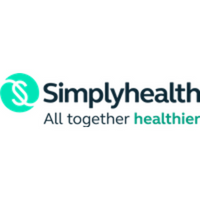How to measure employee wellbeing and identify risk areas that affect business performance

This year we’ve placed an even greater focus on employee wellbeing, and we want to help you do the same. We understand it can be tricky to know where to start when it comes to evaluating the return on your wellbeing investment, so we’ve pulled together our top five methods to help you get the most from your wellbeing initiatives and mitigate risk:
1. Employee surveys to measure sentiment
Employee satisfaction surveys are a really valuable tool when it comes to measuring wellbeing. At Simplyhealth we run a monthly Engagement survey through Chatterbox. Not only does this give us a regular pulse check on how our employees are feeling, but we also gain insight on specific issues like stress and anxiety, enabling us to respond to health and wellbeing issues in real time.
A lot of insight can also be gained by running a health and wellbeing survey. To help shape our new programme, ENERGISE YOU, we surveyed staff to understand their current wellbeing, wellbeing at work, and wellbeing priorities. This has proven a great data source, informing all of our colleague health and wellbeing initiatives.
It’s also worth considering how changes in the current climate, ie COVID-19, could be impacting your employees. During the pandemic we’ve been running a ‘Ways of Working’ survey to help us understand more about how people are coping remotely.
2. Use HR data
Workplace metrics like number and frequency of absences, quality and quantity of work output, and levels of staff retention can be useful reference points when tracking changes in wellbeing. We use HR data alongside the results and scores from our employee surveys for a clearer indication of employee wellbeing within our own business.
It’s worth noting, however, that mental health absence is often reported as physical illness by employees. A poll of 2,000 people, conducted by Censuswide and Slater and Gordon in 2019, found that as many as 55% of employees reported physical illness when they were in fact off for mental health reasons. And with 89% of organisations having observed presenteeism in the last 12 months, according to our latest Health and Wellbeing at Work report, it can be difficult to know how employees are really feeling by looking at data alone.
3. Create a culture of openness
Tracking wellbeing often requires disclosure, but employees are unlikely to feel comfortable doing so if the culture in your organisation isn’t right. A good place to start is to really try and normalise conversations around wellbeing. Encourage managers to set-up regular one-to-ones, and highlight that the focus shouldn’t necessarily just be work, but a personal check-in to see how their team are doing. This doesn’t need to be face-to-face either. A quick message via Teams, Slack or Skype is a great way to stay connected.
Or, why not run an informal coffee morning? Our team of mental health first aiders host a drop-in session every Wednesday for a cuppa and a chat – a great solution for supporting employees and helping them support their peers. Be sure to track any feedback resulting from these conversations to enhance your wellbeing strategy.
4. Management Information
Management Information (MI) is a powerful tool for employers striving to improve their understanding of their employees’ health and wellbeing challenges. With information about age demographics, gender splits, and claim trends, exploring this data can help inform and develop your health and wellbeing strategy, whilst providing your HR team with valuable insights.
Stats from our own employee assistance programme data highlighted the benefit of offering counselling for those in need. Nearly half (46.3%) of our employees undergoing counselling who were out of work at the start of therapy were back in work at the end.
5. Risk areas and how to spot them
Risk areas are easy to spot when you’re implementing a combination of wellbeing measures. But consistently monitoring your wellbeing strategy is equally as important. Keep an eye out for changes in feedback, and set benchmark figures for your HR and MI data. You can then take verbatim feedback collected from employee surveys to combine the data and identify trends.
If you’re measuring employee wellbeing successfully you’ll be able to look at key themes from your data to see how it might be affecting business performance. Our data has helped us identify mental health as a risk area, as well as highlighting sleep, energy and physical fitness as themes needing attention. We’ve since provided Mental Health Awareness training for all managers, launched the SimplyMe app helping users to take control of their physical and emotional health, and now publish a Wellbeing Weekly email full of articles and useful tips.
What we’ve learnt
To truly perform well, businesses must make employee engagement, and health and wellbeing key priorities. Since January, our employee engagement score has increased by 2.1 to a score of 7.8, and 79% agree Simplyhealth demonstrates a commitment to their health and wellbeing. But this wouldn’t have been achievable if we hadn’t listened to our employees and incorporated their feedback into our strategy.
This article is provide by Simplyhealth.
Supplied by REBA Associate Member, Simplyhealth
Our health plans make it easy for people to maintain their health&wellbeing.







